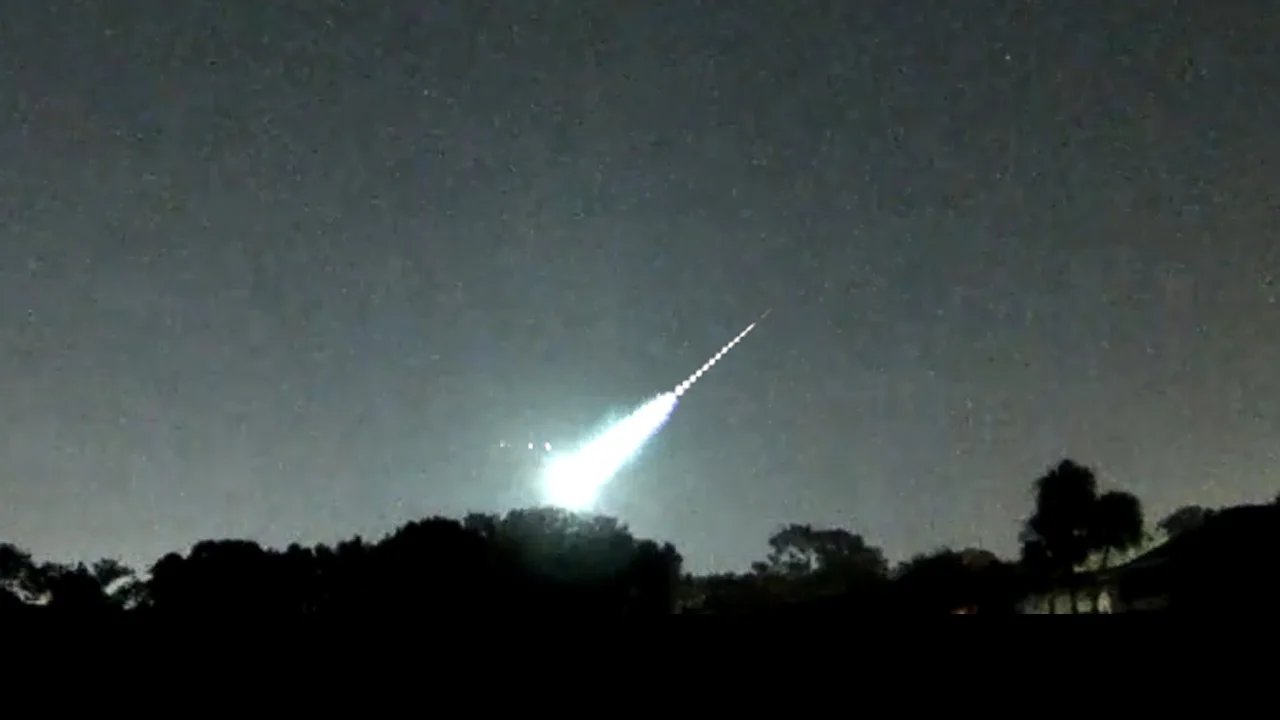
Bright fireball meteor explodes over Florida Monday night
A large boulder the size of a small boulder slammed into Earth's atmosphere at nearly 50 times the speed of sound!
Floridians were treated to a fantastic sight on Monday night, as a bright fireball blazed across the sky and then exploded with a brilliant flash of light.
At around 10:15 p.m. ET on April 12, 2021, our planet had an extremely close encounter with a small space rock on its journey around the Sun. Swept up by Earth's atmosphere, this meteoroid plunged towards the surface, lighting up the sky as it did.
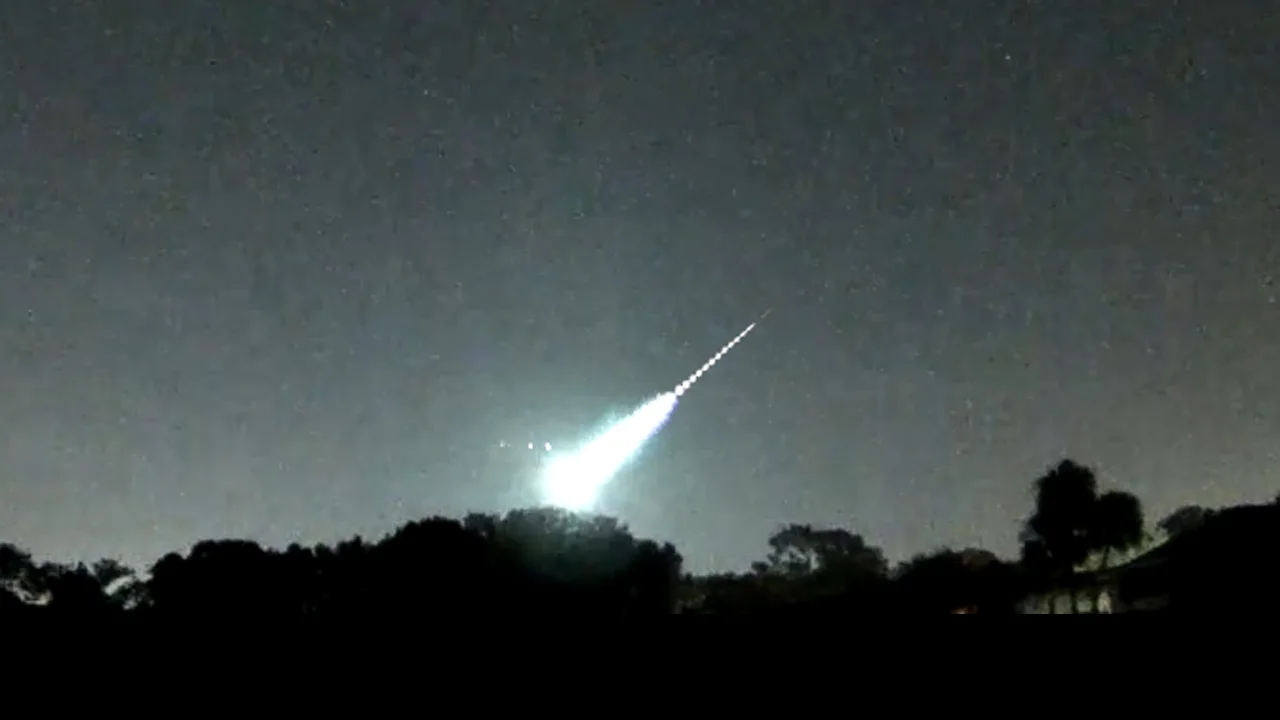
This image combines 30 frames from a video shot on the night of April 12, 2021, from Lakeland, FL, just to the southwest of Orlando. It captures the entire path of the fireball that flashed over the area, from beginning to just before it filled the horizon with light as it exploded. Video credit: Joseph Gresham
As of Tuesday afternoon, the American Meteor Society had collected 230 witness reports from the event, from people across the entire Florida peninsula, the Bahamas and even as far away as central Georgia. The exceptionally clear skies over the U.S. Southeast on Monday night would have guaranteed a perfect view for anyone who happened to be looking in the right direction at the time.
By compiling all of these reports and comparing each witness's account of the fireball location and direction of travel, AMS scientists can estimate where it happened. With these fireballs typically occurring very high up in the atmosphere — 30 to 50 kilometres above the surface — it's tough for individual witnesses to accurately judge the meteor's trajectory. The more reports they get, however, the more accurate the AMS estimate will be.
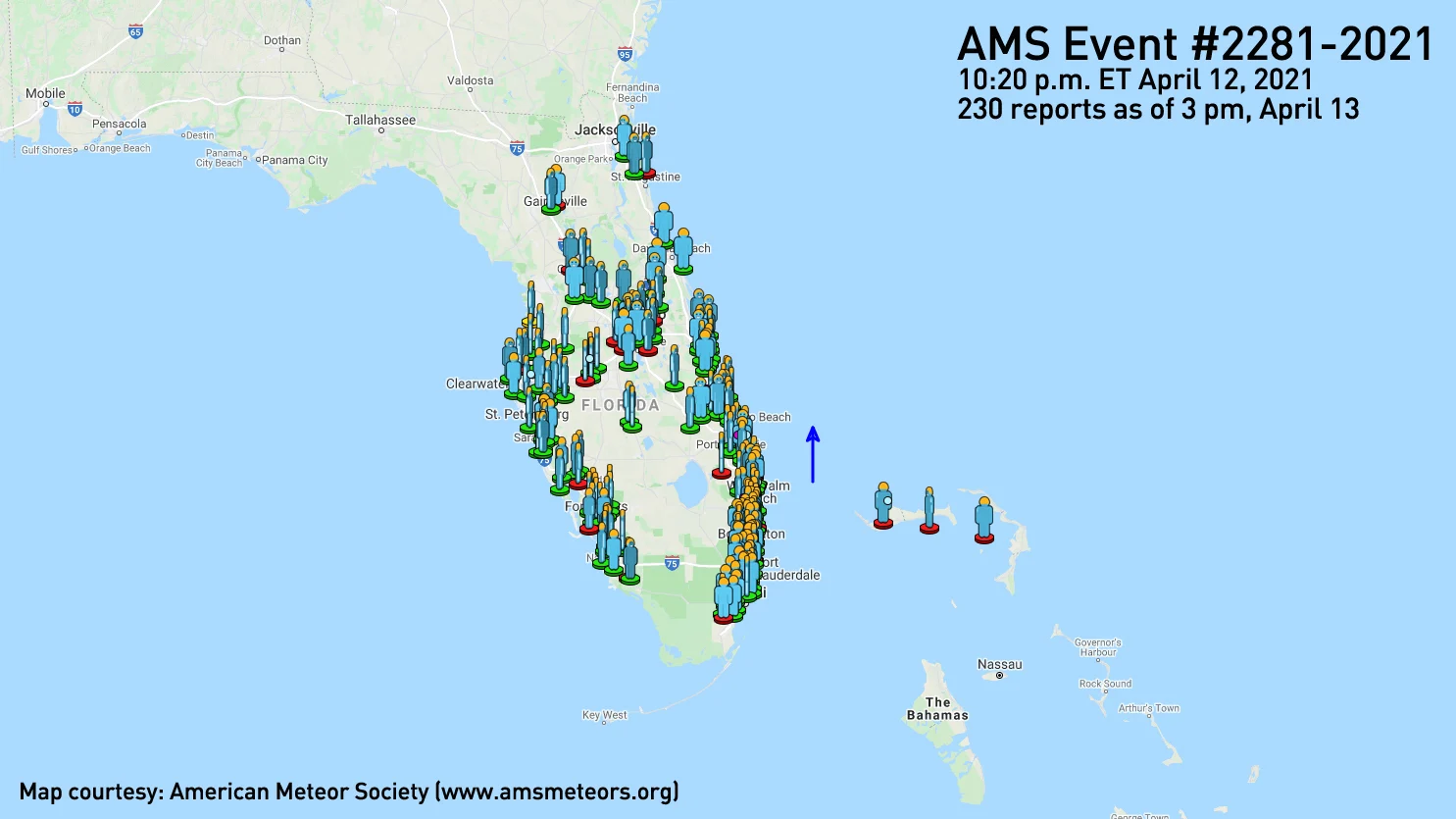
The event map from the American Meteor Society shows the likely trajectory of this fireball. Credit: AMS
This meteor's estimated trajectory puts it travelling from south to north, out over the Atlantic Ocean, about 60-70 kilometres northeast of West Palm Beach.
According to the International Meteor Organization, no major annual meteor showers are happening right now. The next meteor shower this year is the Lyrids, which begins on April 14 and peaks on the night of April 21-22. While this fireball occurred only two days before the shower begins, it's unlikely to be an early Lyrid. At the time of the fireball, the 'radiant' for the Lyrids — the point in the sky where the shower's meteors appear to originate from — was in the northeastern part of the sky.
Thus, this particular fireball was likely a sporadic meteor — one not associated with a known meteor shower.
'A LARGE BOULDER THE SIZE OF A SMALL BOULDER'
Remember that viral Tweet from the sheriff's office in San Miguel County, Colorado?
In a post to their Facebook page, NASA Meteor Watch identified the likely cause of this fireball. They said it was an asteroid fragment over 60 centimetres wide — about the size of an exercise ball — with a mass estimated at around 400 kilograms, which hit the atmosphere at a speed of over 60,000 kilometres per hour.
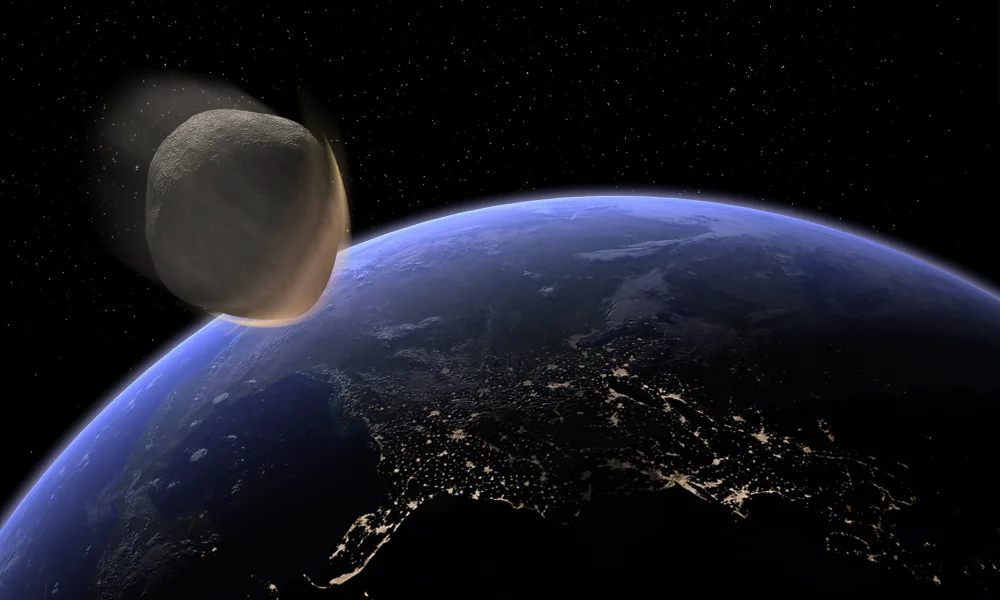
This artist's rendition shows a small Earth-impacting asteroid hitting the top of the planet's atmosphere. Credit: Kevin M. Gill, CC BY 2.0
"This translates to a kinetic energy of about 14 tons of TNT," they wrote, "explaining the flashes of light that lit up the sky as the fragment broke apart."
Compared to most of what hits our atmosphere on a daily basis, that's a large space boulder! However, contrast this with what has hit our atmosphere, even in the recent past. Notably, the Chelyabinsk Asteroid was estimated at around 20 metres wide, with a mass of over 12 million kg. So, this was still a relatively small space boulder that posed no threat to anyone on the ground.
WILL THERE BE METEORITES?
Based on past conversations with meteor scientist Denis Vida at Western University, it's the slower meteoroids — those travelling at less than 30 kilometres per second — that are most likely to result in meteorites hitting the ground. Based on NASA Meteor Watch's calculations, this particular meteoroid was travelling at around 17 km/s. So, some fragments of it probably did reach the surface intact.
However, given that this meteor flashed over water, any meteorites from it are on the bottom of the ocean now.
SEEN FROM SPACE
This fireball was not only bright enough to be seen by witnesses from hundreds of kilometres around, but its explosive flash was also seen from space.
The Geostationary Lightning Mapper (GLM) instrument, on board the GOES-16 geosynchronous weather satellite, routinely monitors cloud-tops for lightning strikes. This sensor will also pick up any other flash of light in its view if that flash is bright enough.
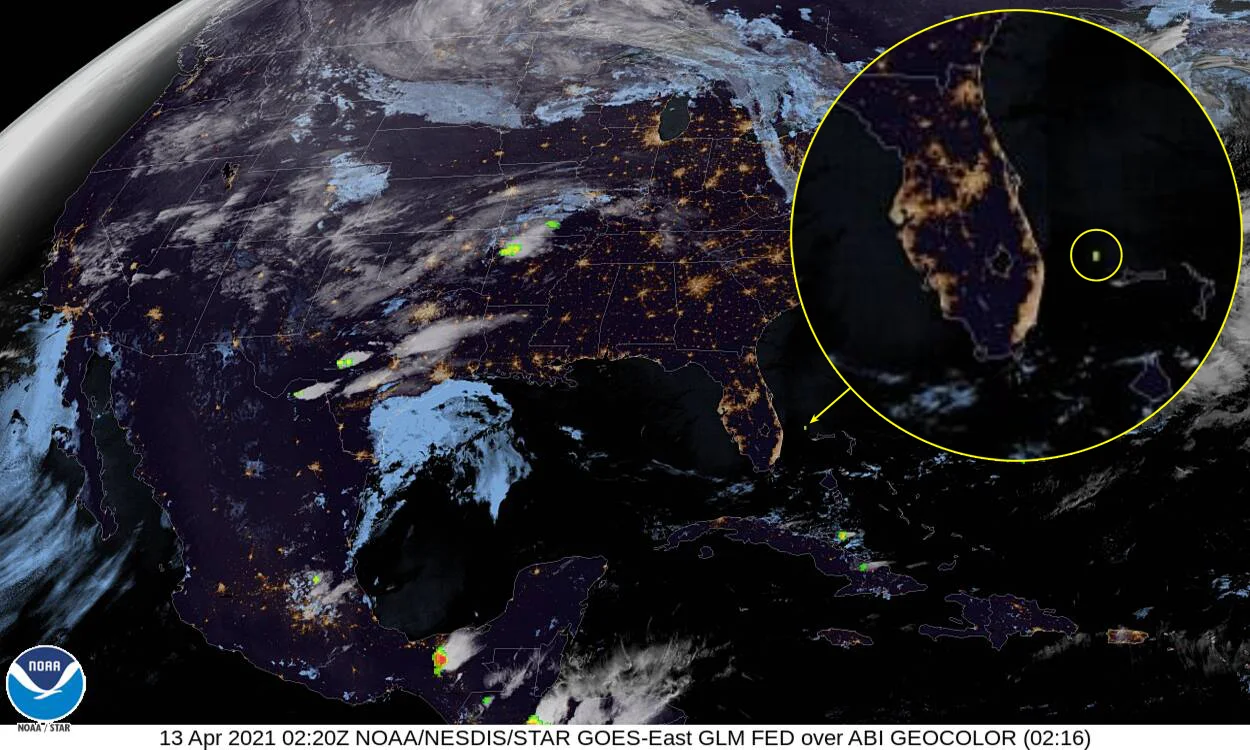
The continental view of GOES-16's Geostationary Lightning Mapper picked up the fireball flash at 10:20 p.m. ET on April 12 (02:20 UTC, April 13). The inset image shows a close-up view of the area. Credit: CIRA/NOAA
In this case, the GLM picked up the fireball explosion in almost the exact spot that the AMS estimated.
Read more: Got your hands on a space rock? Here's how to know for sure!
WHAT'S GOING ON HERE?
Out in space, there are likely millions of tiny bits of rock and ice and dust floating around the Sun. These are all leftover pieces from the formation of the solar system over 4.5 billion years ago. As they orbit the Sun, these meteoroids travel at speeds of tens to hundreds of thousands of kilometres per hour. So, if their path happens to intercept Earth, they plunge into the atmosphere at high speed.
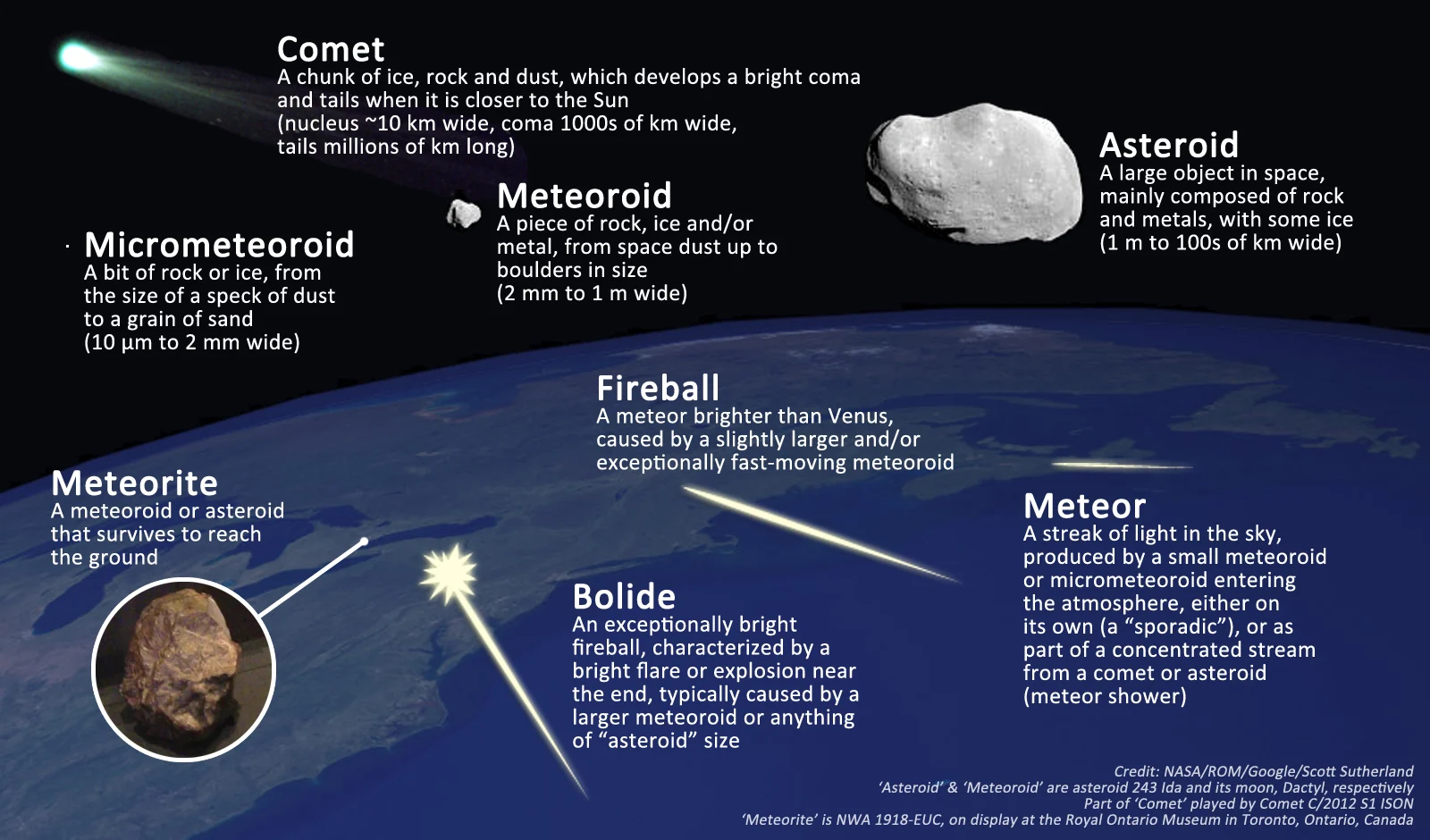
As the meteoroid encounters air molecules in its path, it compresses those molecules together. This slows the meteoroid down, and if it compresses the air hard enough, that air will glow. This is the 'meteor' flash that we see.
If these meteoroids are tiny, such as microscopic dust grains, we may not notice them at all. If something more significant — the size of a grain of sand up to a pebble or even larger — passes over places we inhabit, though, they are much more noticeable. The larger and faster-moving the meteoroid is, the brighter the resulting meteor will be. Brighter ones are referred to as fireballs, while the brightest (which usually involve the meteoroid exploding during flight) are often called bolides.
The meteors' colour depends on a few different factors, such as the concentration of gases compressed by the meteoroid and the minerals and metals found in the meteoroid itself.
If a meteoroid is large enough and moving slowly enough as it makes its plunge through the atmosphere, pieces of it can reach the ground intact. If we find these, we call them meteorites.
Editor's note: A previous version of this article mistakenly said that the fireball was spotted around 10:20 p.m., when it was closer to 10:15 p.m. This has been corrected. Also, the article has been updated with new information from NASA Meteor Watch, as well as an appropriate reference and explanation for the "large boulder/small boulder" meme.










